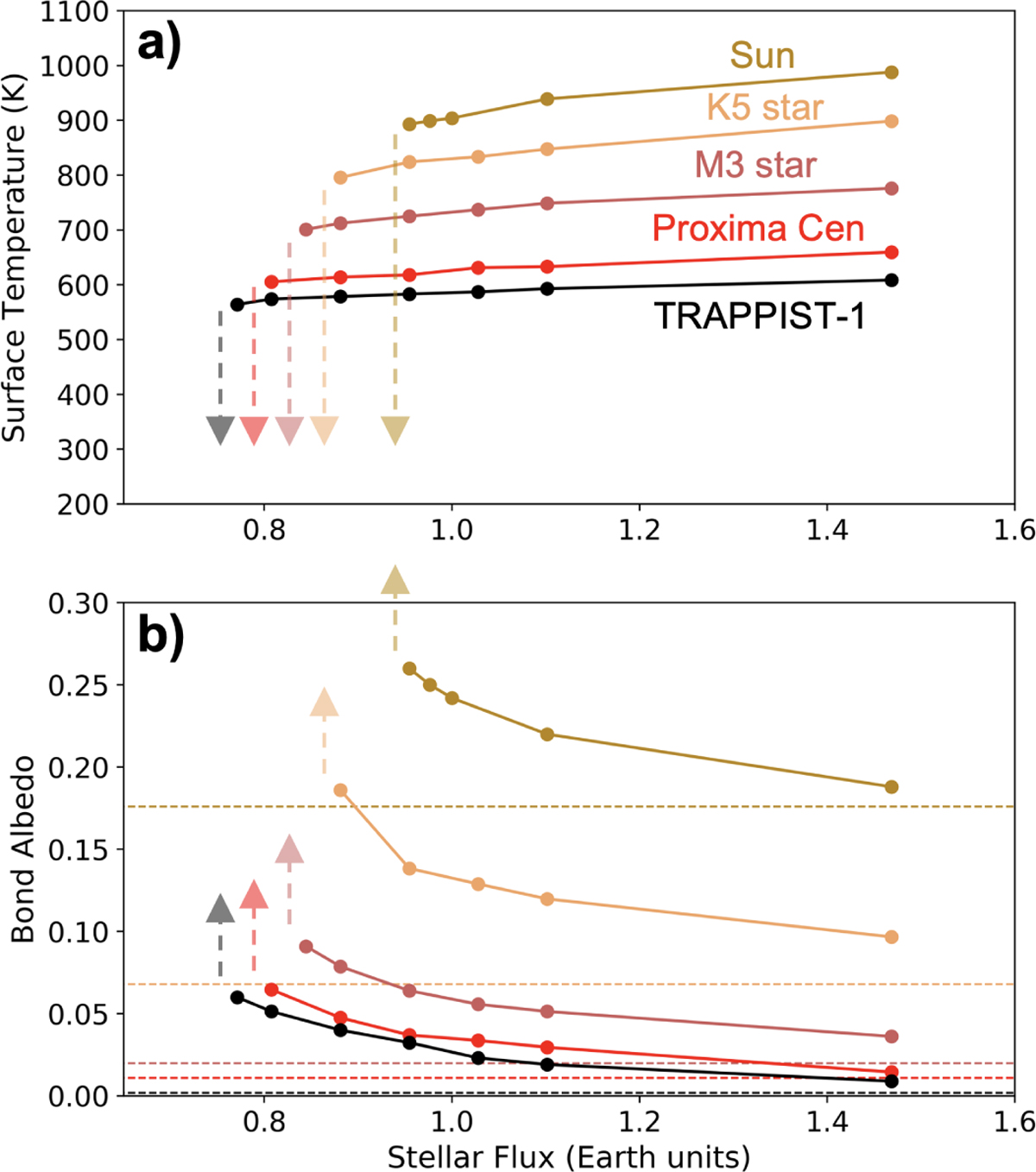Fig. 5

Download original image
Conditions of ocean formation for initially hot and steamy 1 R⊕ planets (with a 10 bar H2O + 1 bar N2 atmosphere) orbiting around different types of stars: TRAPPIST-1 (T★ ~ 2600 K), Proxima Centauri (T★ ~ 3050 K), an M3 star (T★ ~ 3400 K), a K5 star (T★ ~ 4400 K) and the Sun (T★ ~ 5780 K). The associated simulations names are T1-1 to 8, Pcen-1 to 7, M3-1 to 7, K5-1 to 6 and SUN-1 to 6, respectively. The figure depicts the evolution of surface temperature (top) and bond albedo (bottom) as a function of the incoming stellar flux. We made the assumption of a synchronous rotation for all the simulations, except for those of the Sun (where we took the results directly from Turbet et al. (2021) in which rotation period is equal to 1 Earth day, orbital period is equal to 365 Earth days, and obliquity is equal to 23.5°). Horizontal dashed lines indicate the bond albedos of planets in a runaway greenhouse effect, obtained from 1D cloud-free calculations (Kopparapu et al. 2013). The dashed arrows indicate the ISR threshold limit at which the radiative TOA budget becomes imbalanced, leading to a runaway water condensation.
Current usage metrics show cumulative count of Article Views (full-text article views including HTML views, PDF and ePub downloads, according to the available data) and Abstracts Views on Vision4Press platform.
Data correspond to usage on the plateform after 2015. The current usage metrics is available 48-96 hours after online publication and is updated daily on week days.
Initial download of the metrics may take a while.


